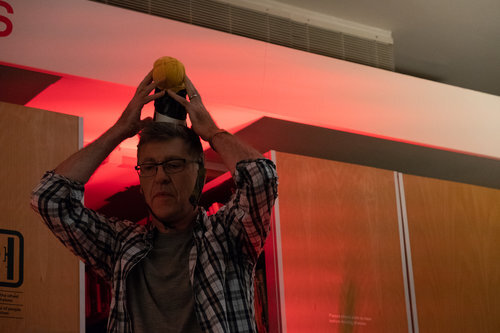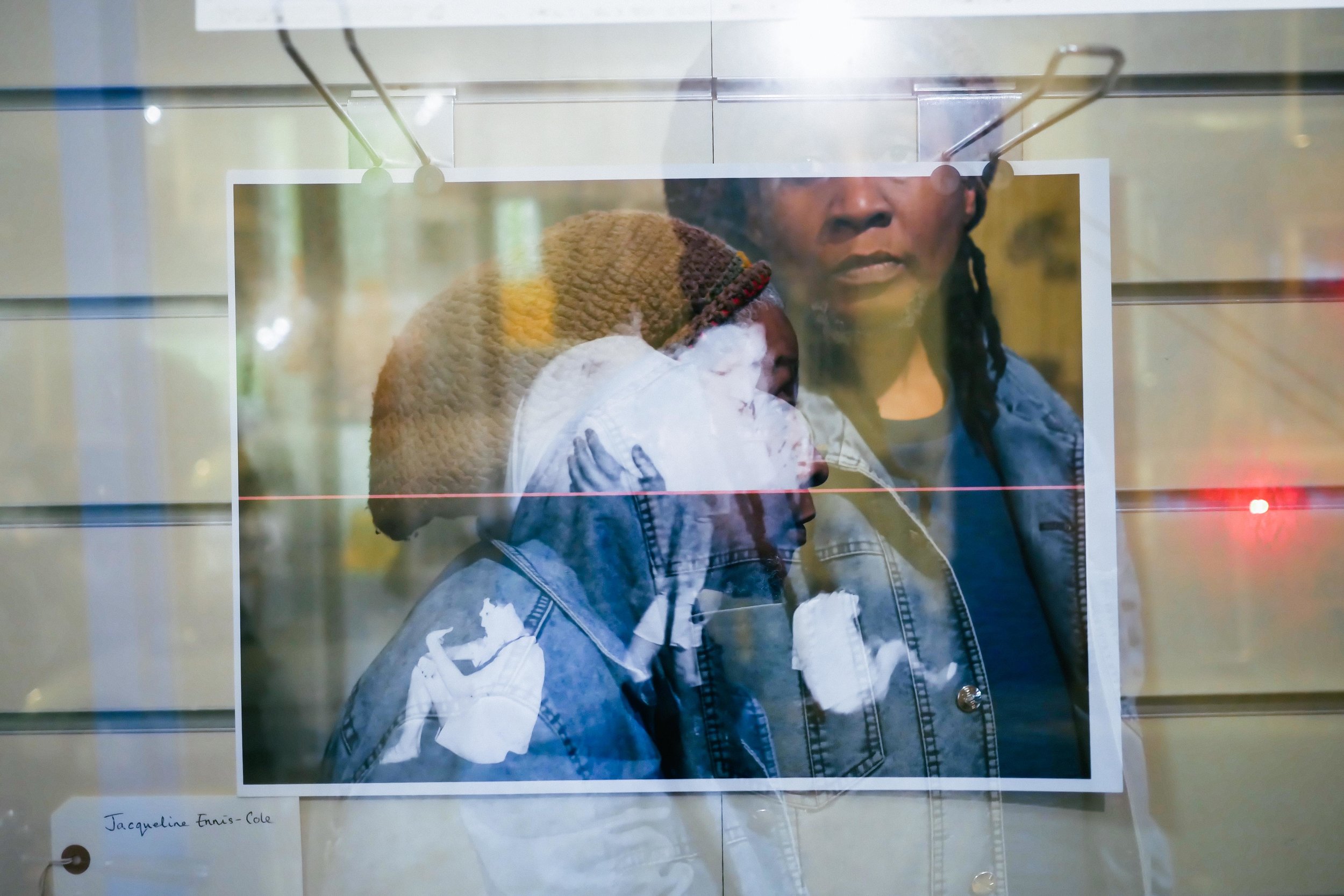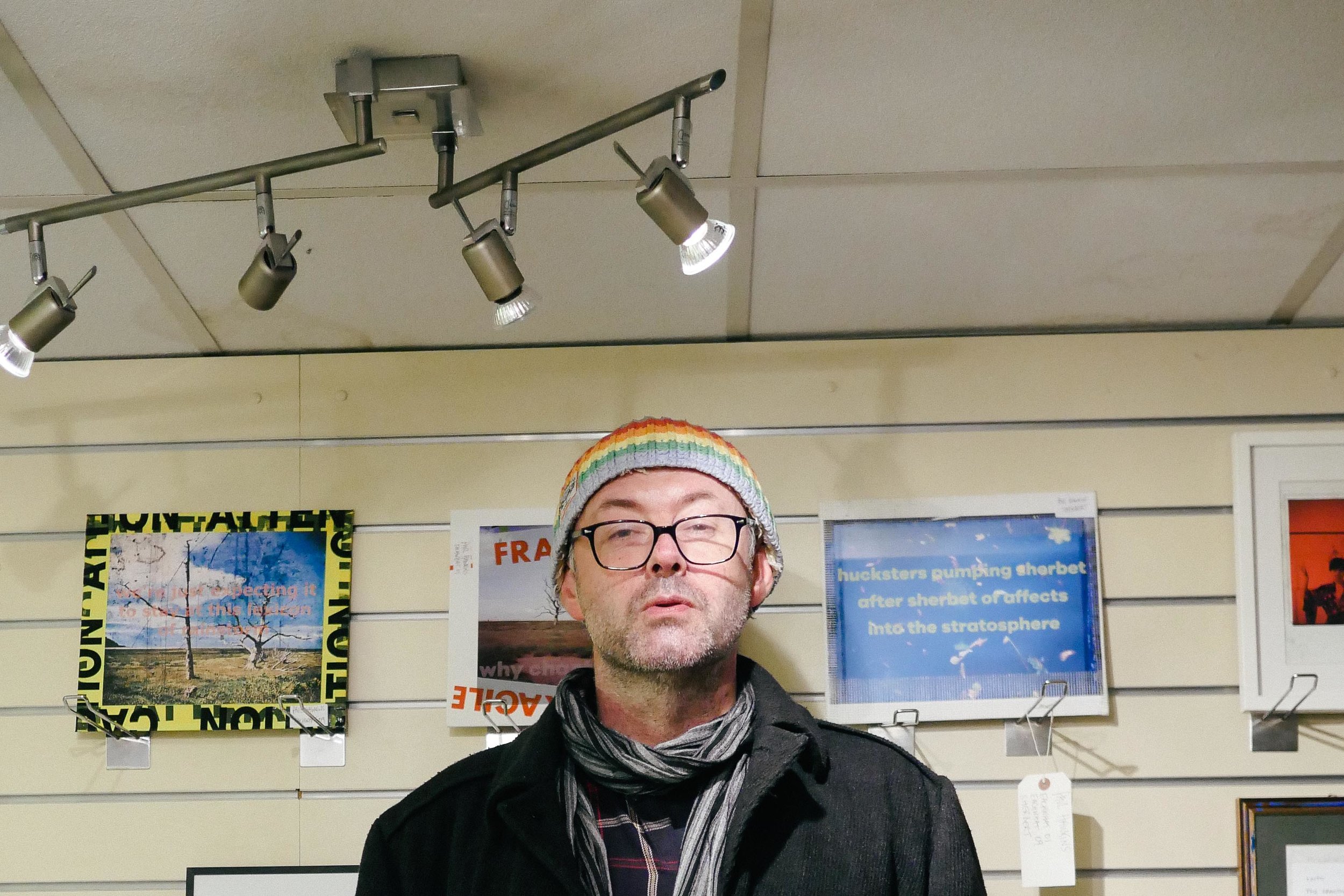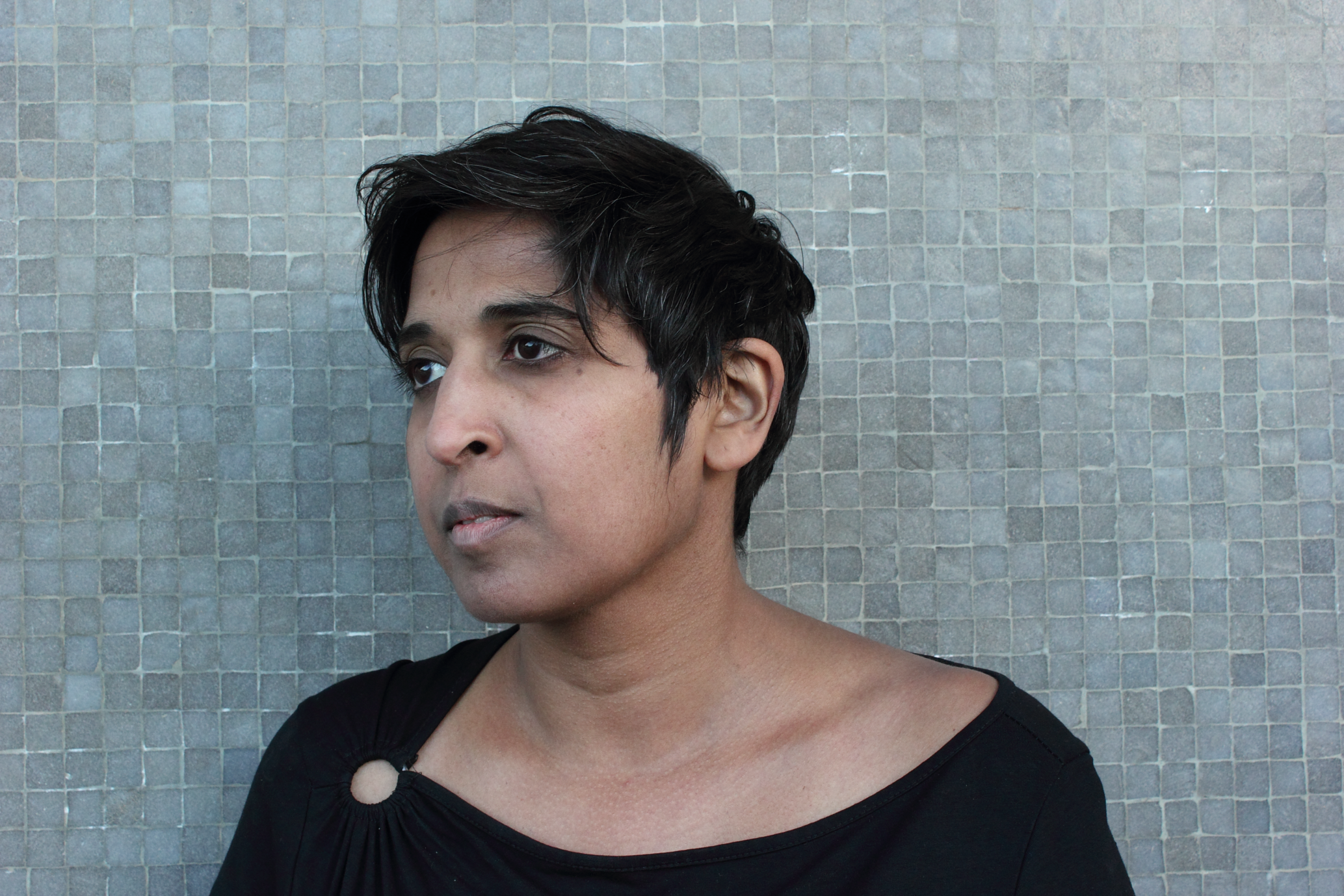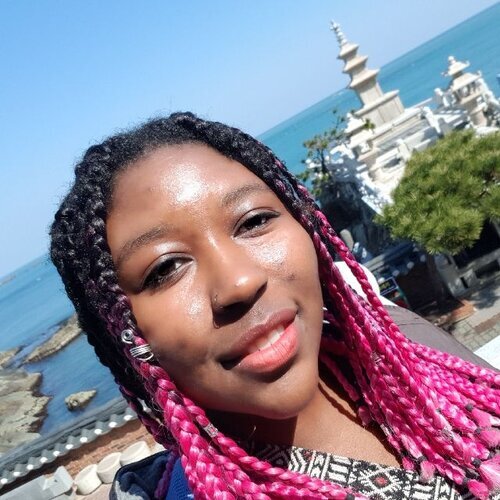Poem Brut Commissions
Poem Brut has always operated on a commission model, with poet-artists from across the UK and beyond asked to prepare brand new works, responding to the themes of the project, for the online page, or for one of the many live events we curated. Our commissions will define the project, aiming to provide some of the UK’s most original poet-artists the opportunity to develop new pieces of work. Here are a selection of poets from the twenty artists involved in the first commission program. Thanks to the Serendip Studio and Arts Council England, these commissions have not only explored the possibility of the handmade to create new ways to making, sharing, presenting and understanding literature, but increasingly explored how our minds operate, and how our brains shape our writing and reading and performing and listening, and understanding. Poem Brut as an exploration of neuropoetics. The commissions are as open to the poets in form as they are in content. They support time for making, thinking, teaching or sharing.
Regular Poem Brut contributors include - Saradha Soobrayen, Jacqueline Ennis Cole, Paul Hawkins, Karenjit Sandhu, Simon Tyrrell, Susie Campbell, Patrick Cosgrove, Bob Bright, Vicki Kaye, Christian Patracchini, Harry Man, Stephen Emmerson, Mischa Foster Poole, Lavinia Singer, Julia Rose Lewis, Lucy Furlong, Iris Colomb, Vik Shirley, Sarah Dawson, Martin Wakefield, Michael Sutton, Madeleine Culver and many more
One off commissions by Hiromi Suzuki, Kate Wakeling, Chris Stephenson, Olga Kolesnikova, Julia Schuster, Ruhi Parmar Amin, Andre Bagoo, Sarer Scotthorne, Isadora Vibes, David Turner, Peter Jaeger, Camilla Nelson, Clive Birnie, Lizzie Turner, Liz Zumin, Maja Jantar, Chrissy Williams, Susanna Crossman, Nathan Walker, Arturo Desimone, Alban Low & Kevin Acott, Dovydas Laurinaitis, Abigail Palmer, Jennah Fletcher and many more
Poem Brut : Articles and Interviews
on THE LEARNED PIG - Absent Indispensables : On Time and Poetry https://www.thelearnedpig.org/on-time-and-mess/5477
on TENTACULAR - The New Prim and Proper https://www.tentacularmag.com/elsewhere-blog/new-prim-and-proper
on EACH WHAT - a word on Poem Brut by Paul Hawkins https://eachwhat.com/EACHWHAT-Vol-1
Below, Michael Jacobsen interviews Jefferson Hansen and Rosaire Appel
Jefferson Hansen interviewed by Michael Jacobson
Find 100 Hybrids here http://postasemicpress.blogspot.com/2018/07/100-hybrids-by-jefferson-hansen-is-now.html
MJ: Give me a little background on your personal, educational, and literary history.
JH: I was born in Sturgeon Bay, WI and grew up in Green Bay. I was educated at Beloit College and SUNY-Buffalo, where I had the privilege of working with Robert Creeley and Charles Bernstein. As far as my literary history goes, I’ve published some chapbooks and books of poetry and fiction. They are mostly of an experimental bent. Over the last six years, I’ve become very interested in asemic writing. There’s something both primal and futuristic about it, sometimes in the same set of glyphs.
MJ: When did you decide to become a writer?
JH: I started writing when I was 14. I wrote a poem. Then I realized if I wanted to write, I needed to read. So I started reading poetry. I checked books out of the library.
MJ: What is your point of view on asemic writing as someone who creates and reads the work of other asemic scribes?
JH: I am blown away by the artistry of some of its practitioners. Some asemic writers have a wild and intense visual ability. More particularly, I’m interested in the way reading asemic writing is, in some sense, ahistorical because the symbols a reader considers are wholly new and without a history of meaning. It creates a vivid and particular experience with each glyph and set of glyphs. And the asemic writers are so varied in their styles and approaches. It’s a fun field to watch grow.
MJ: You have a new book out that I published in my Post-Asemic Press series. Can you describe what 100 Hybrids is about and your process in its creation?
JH: 100 Hybrids presents a new, I think, form that uses both poetry and asemic writing on the same page. The poetry and asemic writing are, depending on the individual piece, in counterpoint, in ironic or comic juxtaposition, or in tension with each other. My process of creation was to first work through several drafts of the poem and then print the finished product on an inkjet printer using “chalkboard” font in Word. Then I used pencil to lay out a pattern around or beside the poem that I could fill in with asemic “symbols.” I laid out a pattern that would seem to dance, or house glyphs, or work against the grain of the poem. I worked out some asemic glyphs on a separate paper. When I got the ones I wanted, I placed them around and beside the poetry. The effect, I hope, is to have the asemic writing and the poetry in a dialogue with each other, even if the dialogue clacks and clatters sometimes.
MJ: What kind of books do you like to read and write? Literary? Experimental?
JH: Besides poetry and asemia, I like to read philosophy, history, fiction, and current events. When it comes to literature, I prefer experimental or historically important works. I write mostly poetry, fiction, and asemia.
MJ: You have 2 books published by BlazeVox: Cruelty, & And Beefheart Saved Craig. Can you tell me more about them?
JH: And beefheart saved craig is a novel about characters who live on the same street in a small Wisconsin city. It experiments with fonts and text boxes. The writing is at a variety of angles. I did this so that both I and the readers could explore all the various forces forming and impinging on the lives of these people. It is a little raw in its depictions of these characters. Cruelty is a collection of short stories that deal with cruelty and indifference in various ways. The stories are often something like magical realism, and they are full of what I hope are wild and unexpected plot shifts. I also hope that some of them are funny.
MJ: What are you working on now?
Right now I am working on a multigenre work of essay/fictions, essays, straight fictions, and poetry. It is concerned with the energies outside language that animate the system of language — the pulsations and melodies and tones and even babbling that allows language to perform. It is also concerned with legal language and how it often tries to dry up these animating energies in the name of explicitness. It also deals with disabilities and the law and fascism’s relationship to language.
MJ: What do you think of the local literary scene in Minneapolis, Minnesota USA?
JH: It’s good. I know you and a number of other interesting writers and asemic scribes such as Tom Cassidy, Terrence Folz, and Lenora Drowns. I do, unfortunately, feel like it is not as open to experimentation, such as asemic writing, as are other places. I think there is a limited and limiting notion of what writing is and can be. I wished it were more open to the new.
MJ: When do you want to get a beer again?
JH: Tomorrow.
Jefferson Hansen lives in Minneapolis and is the author of the selected poems Jazz Forms, the novel And Beefheart Saved Craig, and the short story collection Cruelty. His most recent work is 100 Hybrids.
An interview with Rosaire Appel by Michael Jacobson
MJ: Can you tell me a little bit about your history, where you grew up, attended school, etc.?
RA: Born in NYC, parents moved often so I got a taste of urban, suburban and rural locations – I liked urban best and returned to NYC when I was 20. I was allergic to classrooms, but I did attend the New York Studio School for Painting, Drawing and Sculpture in the late sixties for a couple of years, and before that: poetry workshops.
MJ: How did your fiction evolve into asemic writing?
RA: It didn’t. After the publication of 2 novellas I became involved with black and white film photography and spent a decade in the darkroom. This was the early digital era of tiny pixelated photos and clunky dot matrix printers. Graphics software was becoming available (Adobe Illustrator 1) and it intrigued me. I did the little tutorial that came with it and began making digital drawings using small abstract shapes and configurations that interlinked/ interacted in some way. I stapled these together in booklets - they weren’t called zines at that time. These digital drawings led me to explore similar gestures using ink on paper. There were auction-house exhibits of Chinese calligraphy in New York at that time and I loved those forms, the rhythms of them, the concision. I longed to experience making those forms myself but I had no interest in formally studying it. So I just did it, obsessively made pages of Asian-looking characters - and several months later was introduced to the word asemic.
MJ: Abstract comics and asemic writing make a great pairing, and you make them both skillfully, what makes them go together so well?
RA: (Thankyou!) Verbal / visual pairings automatically create tension moment to moment: are you going to look or are you going to read? It doesn’t matter if the material is abstract, the dynamic is the same. In my work, I attempt to make the asemic/verbal material as active as the visual elements, and even encourage them to trade places….
MJ: You are very prolific, how do you keep coming up with new ideas?
RA: I try not to say no. It’s so easy to say no. An urge to do something pops up – literally – it’s no more than a spark - and an internal voice interrupts: it won’t work, it’s been done, it’s not important - any old negative will do. I aim to over-ride that voice and let the sparks ignite.
MJ: Can you explain your process involved in creating your books?
RA: Each one seems different but they all involve a process of discovery. I gather things together, both material and immaterial and gradually find some path or direction or cohesion that I didn’t recognize before the booking process. I’m very fond of editing – fine-tuning – both words and images. My books go though many versions before reaching their final form.
MJ: What’s it like being a writer and artist in New York City these day?
RA: It’s intense, there’s always a lot happening – gallery shows, museum exhibits, readings - to say nothing of music – but I focus on visuals. Thanks to social media it’s possible to keep in touch with what is going on at the moment and certainly easier to meet other artists than it was say, a decade ago. It is a precarious situation however. The cost of real estate and the invasion of developers and corporations make it increasingly difficult for art and artists to survive here. Already outposts are springing up outside the city…
MJ: What direction do you see asemic writing going in?
RA: I see it expanding. The practice of asemic writing naturally leads to personal explorations of linguistic space and language in general - what is it, how does it work and other inquiries that are usually relegated to linguistic departments and buried under dense terminologies. By now many kinds of asemic marks and spacing are becoming familiar, there’s been a lot of horizontal development. But the asemic concept is beginning to infiltrate other disciplines – music, cartography, architecture to name a few I’ve been exploring. Perhaps the culmination will be asemic chess tournaments – is an asemic chess board possible? Certainly asemic chess pieces are already as possibility in the backs of some minds….
MJ: Can you give me some insight into the creation of your book Zinc Zanc Zunc: An Asemic Conjugation? What was your process in creating it?
RA: Like many of my books, it starts with a sheaf of drawings rather than an idea. Dialogues among the images begin, are extended, edited, re-arranged. It’s a very visual process through which some kind of order gradually appears. It is a very inefficient way of working but has the advantage of arriving at something I didn’t know to begin with.
MJ: Where do you get your ideas?
RA: I walk around, I look at everything, I listen, I read….
MJ: You make handmade books along with print on demand titles, how do the two complement each other?
RA: My print-on-demand books are usually black and white, and the size, paper and binding are standard. My handmade books use a range of paper and binding and materials. I make digital editions as well as one-offs. I also repurpose catalogues and short books, including my own. I am not a conscientious craftsperson however, and prefer moving to the next project rather than repeating myself / i.e. making large editions.
MJ: Tell me a little bit about your book publishing efforts at Press Rappel?
RA: This began as a whim (in 2006) : I saw an article about print-on-demand in the Times and decided to try it. I had been stapling together pages I printed making very limited editions. I like the efficiency of print-on-demand, and I like having total control over the content. I don’t publish other people’s work however because promotion is not my forte – and without promotion a book is dead in the water.
MJ: What are some projects that you are currently working on?
RA: I just finished two books: “Connect Here”, printed and published by Small Editions in Brooklyn, and “Soundtrack/s” published by Press Rappel. “Connect Here” is a (non-asemic) riff on ways the world tries, through ads and questionnaires, to get into our pockets and under our skin. “Soundtrack/s” is an exploration of making something that is invisible – sound – visible. I am continuing to focus on visual sound, using mark-making experiences I discovered through asemic writing. Yes, this could be called asemic music – but I prefer ‘sound’, it carries less weight and is more inclusive.
MJ: What activities do you enjoy besides writing and creating art?
RA: Good conversations and stimulating books. And walking around the city looking at things, any things, art, architecture, construction sites, pavement anomalies, and the light, the movement of pedestrians, the sounds of traffic – all of it. I snap a lot of pics on my phone. It’s a rich experience.
MJ: Can you answer this last question with asemic writing?
RA: [```~~``~`~~,,”/ ``~~~~~”,,||-\ ]
Rosaire Appel (NYC) is an ex-writer, graphic artist exploring the betweens of reading/looking/listening. She makes books (commercially printed, hand-made and recycled), ink drawings and digital drawings. Her subject is, basically, visual language. Using a combination of abstract comics and asemic writing, she develops sequences which remain open to interpretation by keeping the relationship between the viewer and the work active. Her website is: www.rosaireappel.com.
